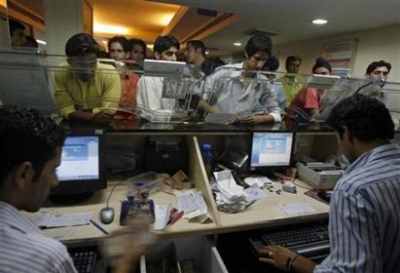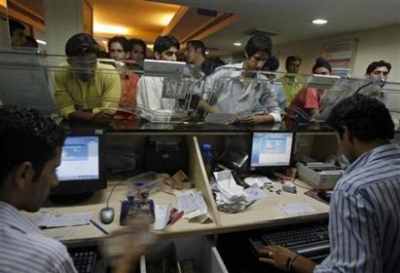India's central bank kept its key policy repo rate unchanged on Tuesday as widely expected, but warned about inflationary risks should a shortfall in monsoon rains spark a surge in food prices.
 The Reserve Bank of India (RBI) also lowered banks' minimum bond holding requirements, known as the statutory liquidity ratio (SLR), by half a percentage point to 22.0 percent to free up more money for lending, effective from Aug. 9.
The Reserve Bank of India (RBI) also lowered banks' minimum bond holding requirements, known as the statutory liquidity ratio (SLR), by half a percentage point to 22.0 percent to free up more money for lending, effective from Aug. 9.
The RBI kept the repo rate unchanged at 8.00 percent as expected by nearly all 43 economists polled by Reuters ahead of the policy review.
The repo rate has been unchanged since January, when the RBI increased it by a quarter percentage point.
Commentary
Rupa Rege Nitsure, Chief Economist, Bank Of Baroda, Mumbai:
"The tone of the policy statement appears to be unchanged from June policy but I am a bit surprised with SLR reduction at this moment because credit demand is still weak. The banking industry still has excess SLR. I have a feeling RBI has implemented it as a long term reform measure to inculcate the sense of fiscal discipline. I think the guidance if one reads it carefully, is cautious rather than dovish.
He is giving a clear signal that one should not expect any monetary policy easing in a fairly long period of time because while RBI is confident that it will attain inflation target of at 8 percent by January 2015, it is not so confident to attain the 6 percent by 2016."
Shakti Satapathy, Fixed Income Strategist, Ak Capital, Mumbai:
"While maintaining the medium-term inflation target of 6 percent by 2016 is clearly a priority, the bank's approach towards policy action would be more of a balanced approach leaving the policy rates unchanged up until November 2014. On the other hand, the SLR cut by 50 bps and subsequent reduction in SLR holdings under HTM category to 24 percent would essentially infuse some growth-supportive liquidity in the system."
Upasna Bhardwaj, Economist, Ing Vysya Bank, Mumbai
"RBI's policy today has been slightly hawkish than the last statement by shifting the inflation target from 8 percent towards the medium term target of 6 percent, thereby further affirming our view of a pause on the repo rate front at least through this year."
Killol Pandya, Fund Manager-Debt At Lic Nomura Mutual Fund, Mumbai
"The initial outcome seems quite hawkish on inflation as the inflation target has been shifted from 8 percent towards the medium term target of around 6 percent. Rest of the things are pretty much in line with market expectations. It seems like there would not be any rate cuts at least in this calendar year."
Background
- India's annual consumer price inflation rose 7.31 percent in June from a year earlier - the lowest since figures were first published in January 2012 - helped by a slowdown in food inflation and a favourable statistical base.
- India's wholesale price inflation in June eased to a four-month low of 5.43 percent, helped by slower increases in food and fuel costs.
- India's industrial production grew an annual 4.7 percent in May, the highest since October 2012, providing welcome positive news for Prime Minister Narendra Modi's new government as manufacturing activity and electricity generation increased.
- Reserve Bank of India Governor Raghuram Rajan said the central bank was "determined" to make sure consumer inflation eases down along a "glide path."
- India's fiscal deficit in the first quarter of the 2014/15 financial year touched 2,978.59 billion rupees ($49.2 billion), or 56.1 percent of the full-year target.
- India's fiscal deficit target for the current fiscal year is "daunting", Finance Minister Arun Jaitley told lawmakers in parliament.











